If luck runs in your favor, every trip to Alaska will be full of wildlife sightings. But because all those animals range wild and free, there’s no guaranteeing when — or if — they’ll put in an appearance.
Happily, there’s nothing wrong with padding the odds in your favor. Consider, for example, the following itinerary, which winds its way through Interior and Southcentral Alaska. It carries you along at a medium speed (you’ll be busy every day but still have time to explore the towns you visit) and creates plenty of opportunities to look for animals, both in the wild and at some of the state’s most interesting animal sanctuaries.

Heads up: Most of these stops are open year-round, but during the winter, their hours may be limited, and the bears will be asleep.
Day 0: Fly in to Fairbanks International Airport
This trip takes you from north to south, arriving by plane to Fairbanks and then flying out of Anchorage, but you could easily do it in the reverse direction. For now, let’s assume you’re arriving at Fairbanks International Airport in the afternoon or evening. You’re going to need a rental car, and it’s easiest to grab one at the airport.
Once that’s done, stretch your legs on the trails of the 1,800-acre Creamer’s Field Migratory Waterfowl Refuge. This is a famous stopover point for migrating sandhill cranes and other birds, but other wildlife sightings are common here too.
Grab dinner and head to your hotel; you’ll have a full day tomorrow.
Day 1: Running Reindeer Ranch and UAF Large Animal Research Station
Running Reindeer Ranch is actually a private home — and learning how the proprietors ended up with a herd of reindeer in their backyard is a delightful part of this walking tour. The reindeer dart, dash and browse freely around you as you stroll, and of course, there’ll be lots of reindeer photo ops, too.
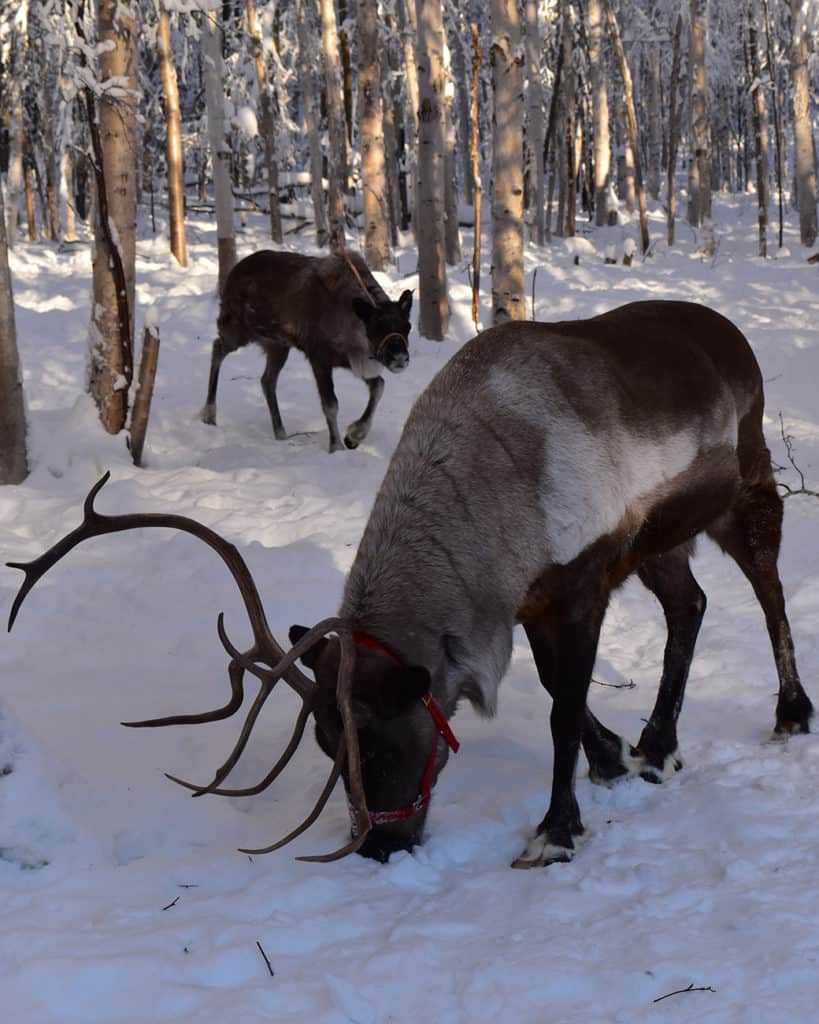
But it’s the knowledgeable human handlers who teach about everything from the forest plants around you to the differences between reindeer and their wild cousins, the caribou, who really make this experience something special.
Oh — and there are cookies at the end of the walk. Trust me: The cookies are really good.
If you prefer your reindeer encounters with a little sweat, try another of Running Reindeer Ranch’s programs: Fly and Flow Yoga With Reindeer. It’s the Alaskan version of goat yoga, with reindeer wandering freely amongst the mats as you practice.
Next, head to the University of Alaska Fairbanks’s Large Animal Research Station, or LARS. Built on a former homestead, this 130-acre research facility is a year-round home to herds of muskoxen and reindeer, but you’ll sometimes see other large animals here, including moose. During the summer, they offer several tours a day, during which you’ll learn about the way these animals are helping humans understand biological principles, wildlife protocols, and their potential usefulness for agriculture in Alaska.
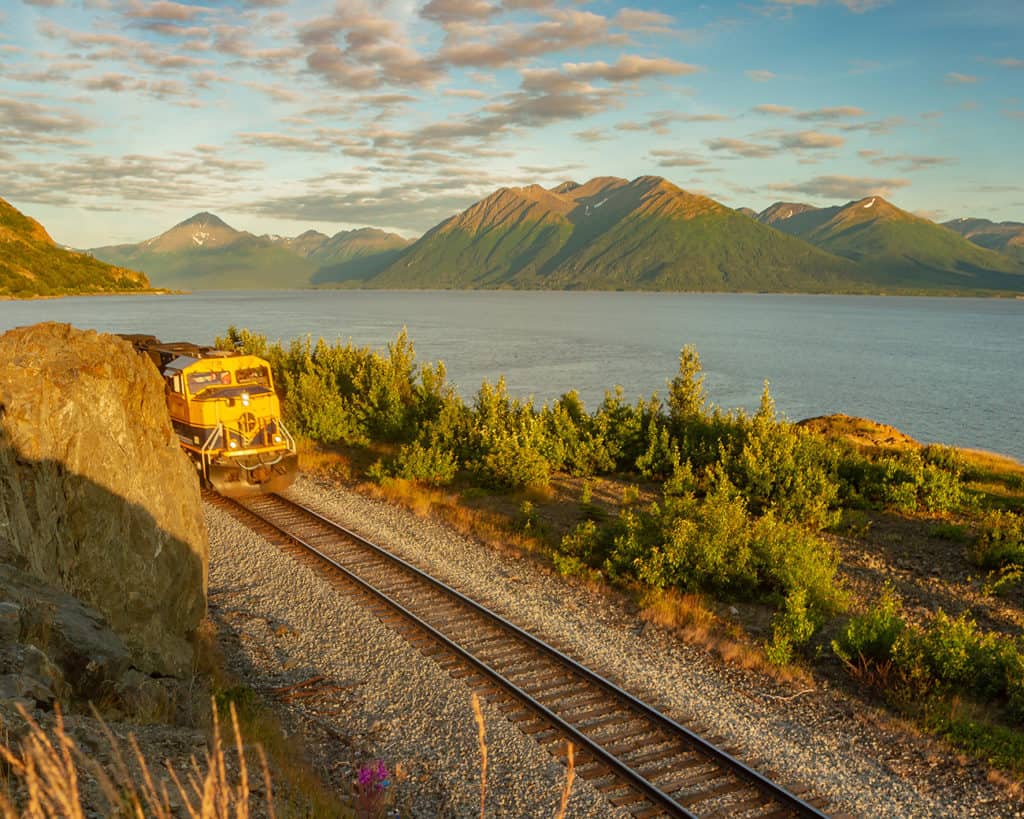
Either return your rental car tonight or do it early tomorrow morning; you’re going to skip out on one-way rental fees by taking the Alaska Railroad’s Denali Star train to Anchorage.
Optional extension: The Denali Star passes right by Denali National Park. If you have a little extra time, consider booking a one- or two-day layover there and taking a bus tour into the park in search of wildlife.
Day 2: Ride the Alaska Railroad south
The Denali Star leaves Fairbanks at 8:20 am, so plan to be at the depot by at least 7:20. The ride to Anchorage is about 12 hours long, so you’ll have plenty of time to soak in the beautiful scenery. The railroad’s famously affable conductors have even been known to stop the train or back it up to ensure everybody gets their chance at a wildlife sighting or an opportunity to snap a photo of Denali if the mountain is “out.”
Once you make it to Anchorage, grab dinner and head for your hotel — a downtown location is the most convenient. If you’re a fan of history and ghosts (and perhaps a few historical ghosts, if you believe the stories) may I recommend the famously haunted Historic Anchorage Hotel?
If you’re pressed for time, you could also make this trip via a quick, roughly one-hour flight from Fairbanks to Anchorage.
Day 3: Palmer Musk Ox Farm, Reindeer Farm
Grab breakfast (If you don’t mind waiting for a table, Snow City Cafe is wildly popular), then grab a rental car, and set out on the 45-mile drive northeast to Palmer. This agricultural town is the perfect setting for venues like the Musk Ox Farm, where you can take a 45-minute walking tour between spacious pens that house more than 80 musk oxen.
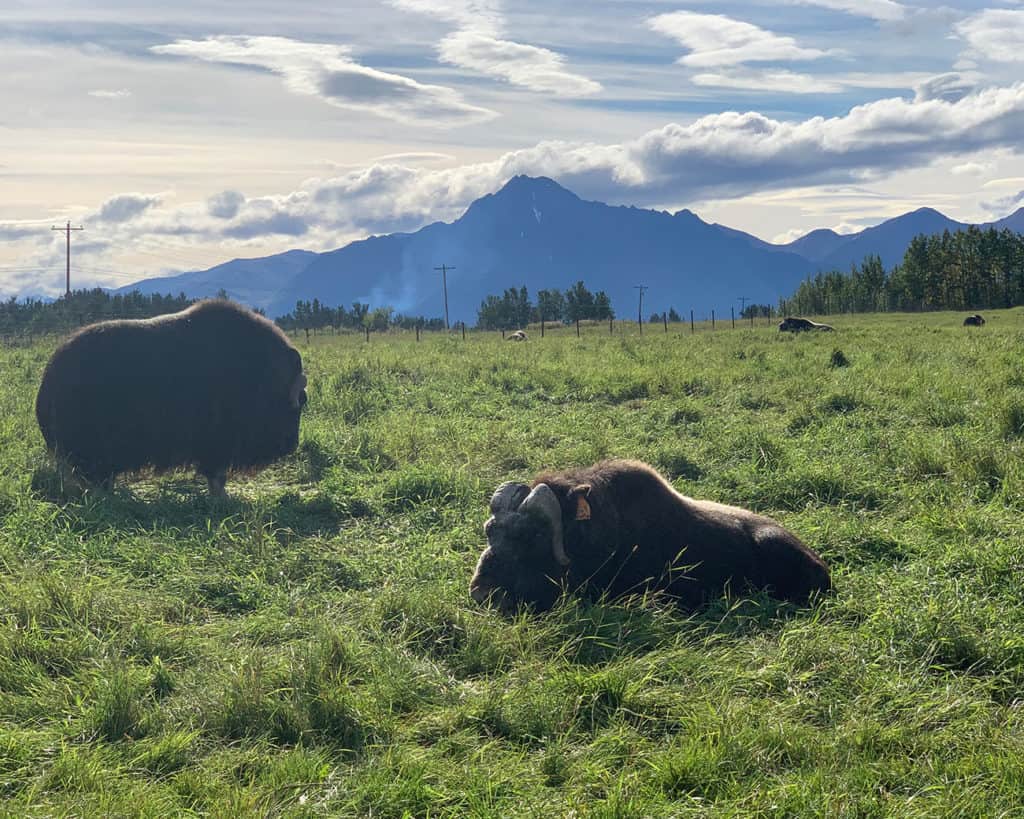
These giant animals aren’t cattle at all — they’re actually the biggest members of the goat family — and they’re here in hopes of domesticating them for their qiviut, a soft, extremely warm underfur that can be harvested without harming the musk oxen.
Once you’ve had lunch, consider visiting another unique Palmer farm: The family-owned Reindeer Farm, where you’ll visit with (and feed) reindeer in large pens. The farm is also home to a famous “kissing moose” — a bull that was orphaned as a calf and doesn’t mind cozying up to guests for carrots and other treats. If you feel like you’ve had your fill of reindeer already, here are a few other options:
- For hikers, consider tackling the short, steep, but very scenic Bodenburg Butte.
- For families who want some outside time, consider a visit to the family-friendly trails around Reflections Lake.
- To learn more about local indigenous cultures, head back to Anchorage and visit the Alaska Native Heritage Center, where you can see demonstrations of traditional drumming, dancing, and other cultural arts and explore life-size recreations of traditional villages from all around Alaska.
Go ahead and drive back to Anchorage when you’re ready; you’ll spend the night there.
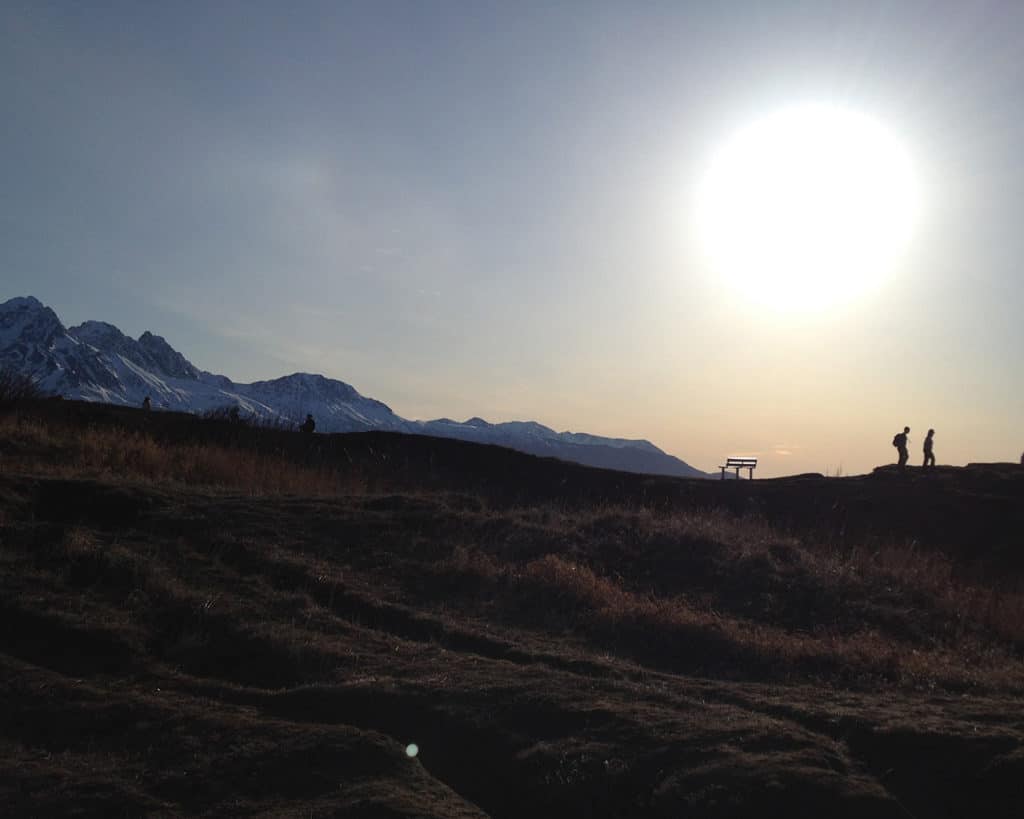
Day 4: Coastal Trail, Alaska Wildlife Conservation Center, and Seward
Get up for an early breakfast, then start your morning by strolling part of the paved, 11-mile (one-way) Tony Knowles Coastal Trail or renting a bike and pedaling it. You’ll find bike rental stands at 5th Avenue and L Street, conveniently close to an access point for the trail. Keep an eye out for bear and moose sightings, especially as you near the trail’s far endpoint: heavily forested Kincaid Park.
If you haven’t already checked out of your hotel, make sure you get back in time — then pile into the car for the beautiful, 130-mile drive south to Seward, where you’ll spend the night. Don’t miss a chance to stroll the paved, oceanside trail that wraps around Seward’s waterfront; you might see sea otters, sea lions, or other wildlife in the water.
Optional extension: If you have time, take a driving break at the Alaska Wildlife Conservation Center, or “AWCC,” as locals tend to call it in print. Located about 50 miles south of Anchorage, this open-air facility is a sanctuary for animals that were orphaned when too young to survive in the wild (including black and brown bears). They’re also active participants in wildlife conservation and restoration efforts such as the Wood Bison Restoration Project.
Day 5: Cruise into Kenai Fjords National Park
Seward serves as a spectacular gateway into Kenai Fjords National Park, 607,000 acres of rugged mountains and coastline. It’s best appreciated on a full- or half-day whale-watching cruise into the neighboring waters, where you can see not just whales but also sea otters, sea lions, porpoises, orcas, and terrestrial wildlife like bears and mountain goats.
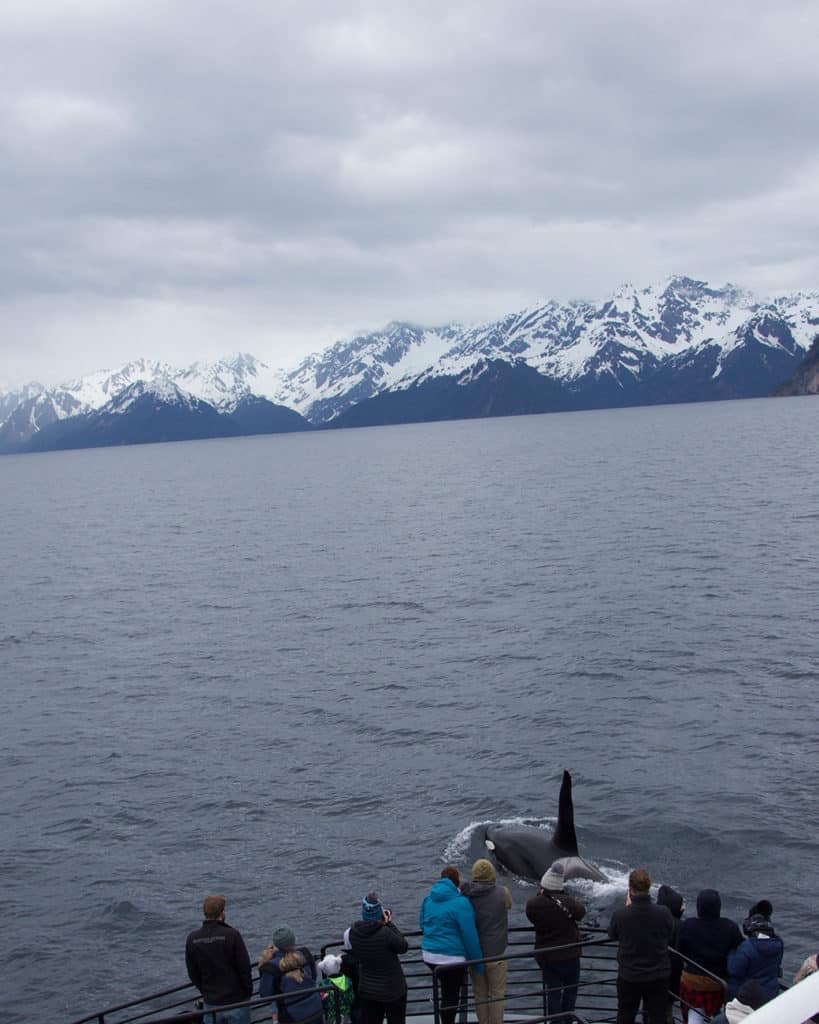
I recommend taking a full-day tour if possible because that frees you up to go farther into the park — which, in turn, increases your odds of seeing wildlife. Spend the night in Seward.
Day 6: Alaska SeaLife Center, back to Anchorage
Today you’re going to visit the Alaska SeaLife Center, a world-class facility that is part educational aquarium, part research and rehabilitation center for Alaska’s marine wildlife. Once you’ve had your fill of touch tanks, the waterbird aviary, and a full range of aquariums from tiny to enormous, it’s time to drive back to Anchorage.
Whoever’s driving needs to keep their eyes on the road, which is often narrow and winding, with no divider between traffic directions. But everyone else in the car can look out for wildlife along the way: Look for mountain goats and Dall sheep in cliffs along the road, eagles soaring overhead, and maybe even small, white beluga whales along the coast near Beluga Point, at roughly mile 110 of the Seward Highway (just a few miles out of Anchorage).
Unless you want to take an overnight flight home, plan to spend one last night in Anchorage.
Day 7: Homeward bound or onward to Sitka
Will you fly straight home, or will you extend your trip to include Sitka, a stunningly beautiful island in Southeast Alaska? Aside from its vast natural beauty and friendly (human) inhabitants, Sitka is a stupendous destination for boat tours in search of humpback whales.
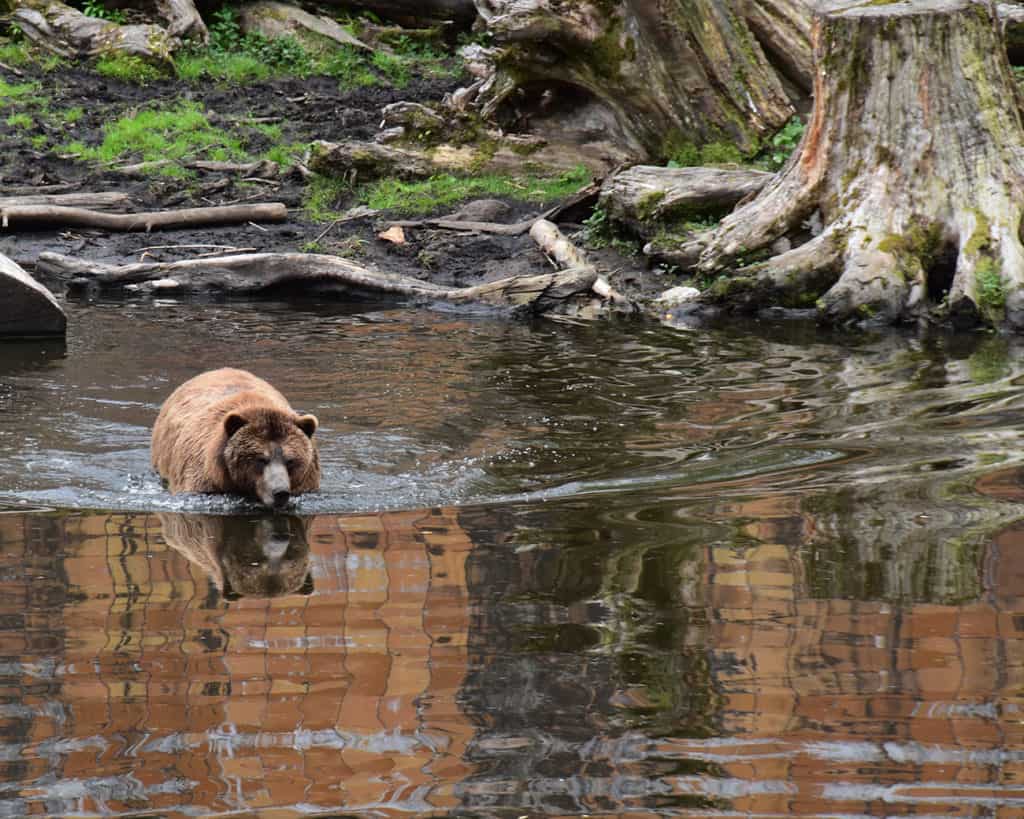
It’s also home to three facilities that serve as interesting windows into area wildlife: The Sheldon Jackson Hatchery at Sitka Sound Science Center, where you can learn about aquaculture and the salmon lifecycle; the Alaska Raptor Center, where you can visit with eagles and other raptors, some of whom are being rehabilitated for release back into the wild; and the Fortress of the Bear, which is home to five brown bears and three black bears who were rescued after being orphaned at a very young age.
It’s always hard to say goodbye to Alaska, and if you have the time, you could easily extend your trip for another week in Southeast Alaska. But when you do have to bid farewell — for now — you’ll always have the memories of your wildlife sightings along the way.
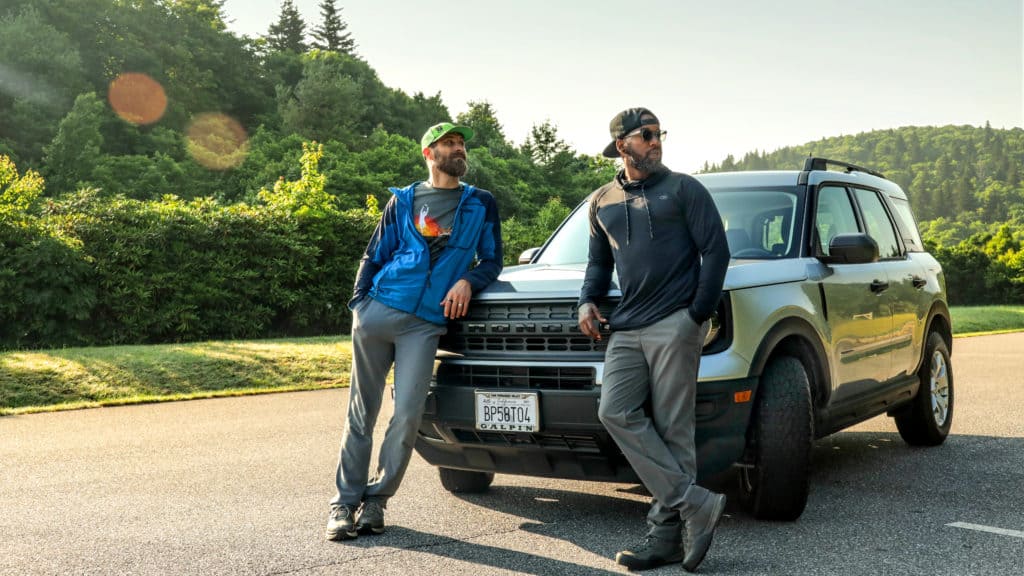
Read Next: Discover more than 50 Summer Road Trips throughout the United States.
Watch Next: Venturing Out: Park 2 Park
Explore: Visit author Lisa Maloney’s Hiking Alaska website for more incredible adventures in the nation’s northernmost state.
